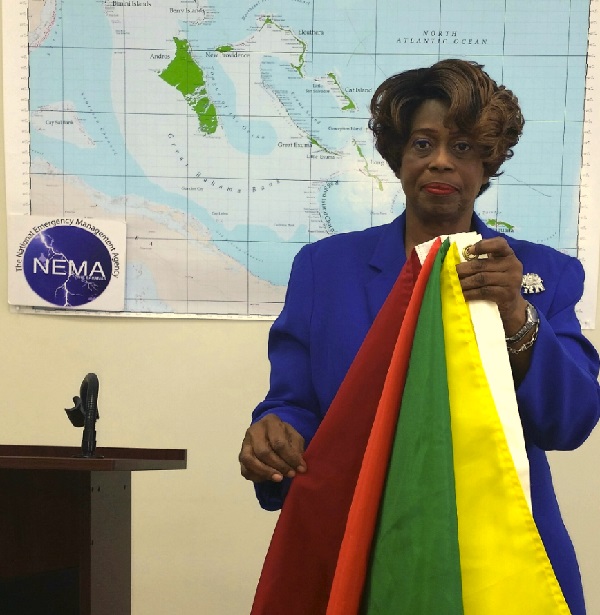The National Emergency Management Agency (NEMA) has implemented an emergency warning system to better prepare and inform the public about a disaster about to impact the country.
The system was first tested during the passage of Tropical Storm Erika, when on Thursday, August 27, 2015 NEMA partially activated the National Emergency Operations Center to closely monitor the storm.
NEMA follows Standard Operating Procedures (SOPs), which provide instructions for activation and the operations of the NEOC, amongst other things. Level I deals with monitoring the system and its projected path, which is 60 hours out. Operations Officer will monitor the progress and keep the Director of NEMA informed. Also, a green flag would be hoisted outside NEMA's office to indicate this level.
Level II or partial activation, which NEMA implemented Thursday, means that the situation has escalated into a real threat to the islands or areas in the projected path 48 hours out. The situation escalates into a real threat such as storm warning, flash flood warning, etc. A yellow flag is hoisted to indicate this. During this phase, a watch is issued which means that the storm is 48 hours or two days out. Residents are advised to take the necessary precautions -- to protect themselves and their properties.
Level III will see an orange flag hoisted, which means emergency conditions exist for example, flash flooding or tornadoes. Also, the NEOC will be activated and utilize the necessary personnel.
And at Level IV, a red flag would be hoisted which means full activation. The Prime Minister of the Commonwealth of The Bahamas will be advised to address the nation on the potential destruction the system would cause.
By this time, residents should be in a wait and see mode and should have already made all preparations for landfall. Such preparations include securing personal documents and seeking designated approved shelters in the event an evacuation order was previously issued. This means the system is 36 hours out.
The ESF groups are made up of personnel from essential services such as health, police force, defence force, water, electricity, communications, shelter management, and other related areas.

Chrystal Glinton, First Assistant Secretary at NEMA says the flags would be prominently flown at various points around the country, namely at Nassau Harbour, the Bahamas Air Sea Rescue Association (BASRA), Family Islands Administrators' offices on the islands, the Royal Bahamas Defence Force Base at Coral Harbour and other strategic locations easily noticeable by the public. The flags would be issued to the respective places for easy access and hoisted during emergency situations.
Ms. Glinton also explained that the flags and colours are in keeping with international standards of emergency procedures and protocols. And shortly, a Tsunami flag, blue, would be introduced.
“This is another way NEMA is improving its warning system,” she said. “The flag colours are easily identified and are used similarly in the medical field.”
Meanwhile, Ms. Glinton urged residents to continue to exercise caution as the Hurricane Season, which runs June 1 to November 30 is entering its peak season. She commended residents for being proactive during Tropical Storm Erika, the fifth named storm of the 2015 Atlantic Hurricane Season.





